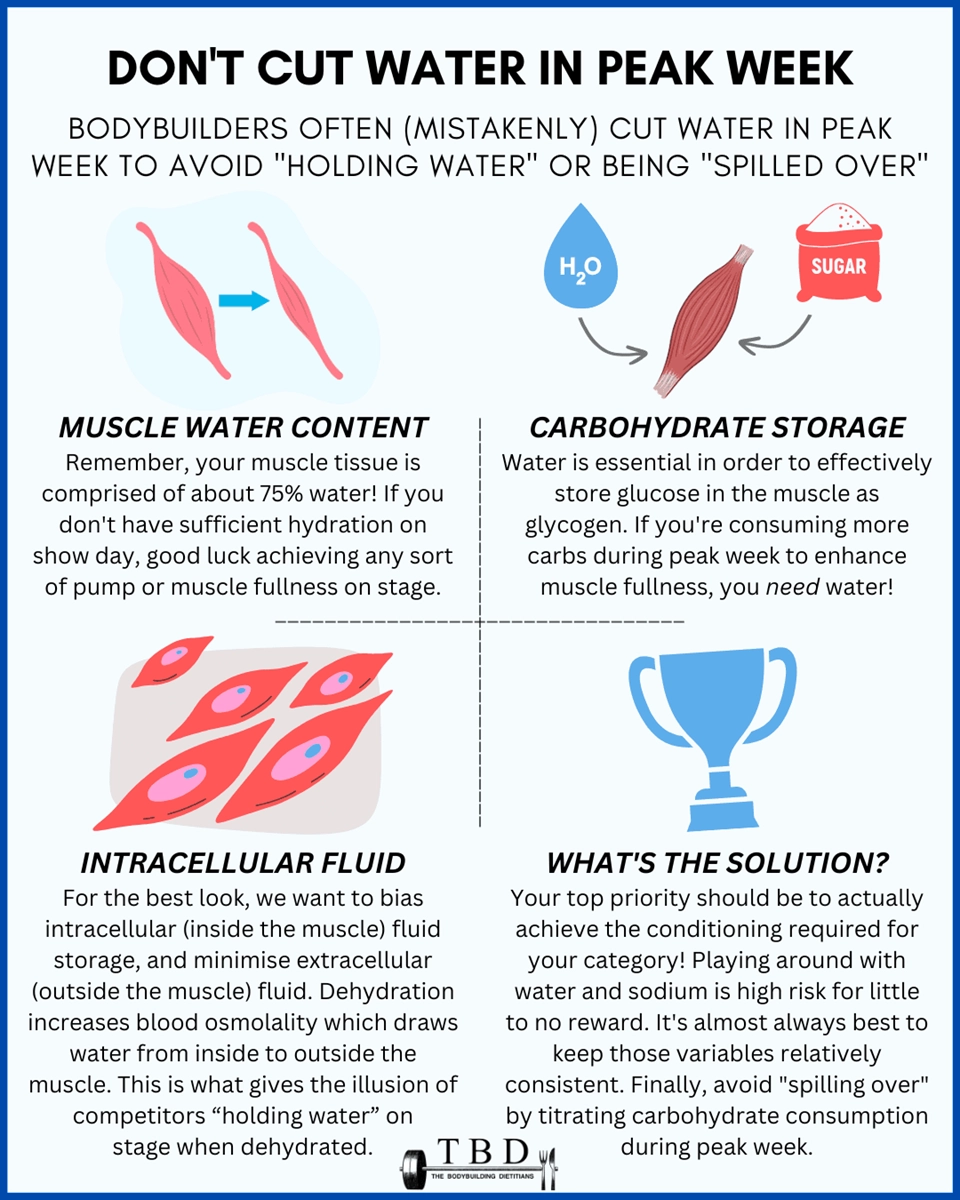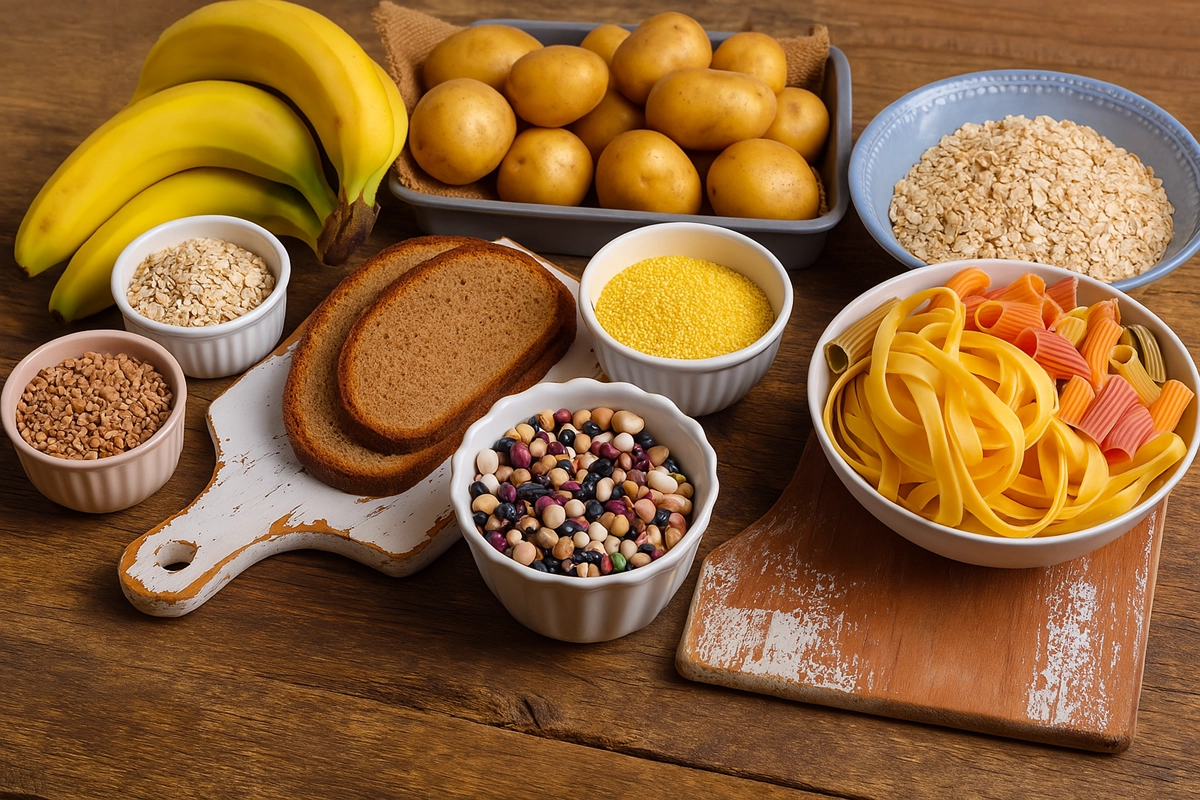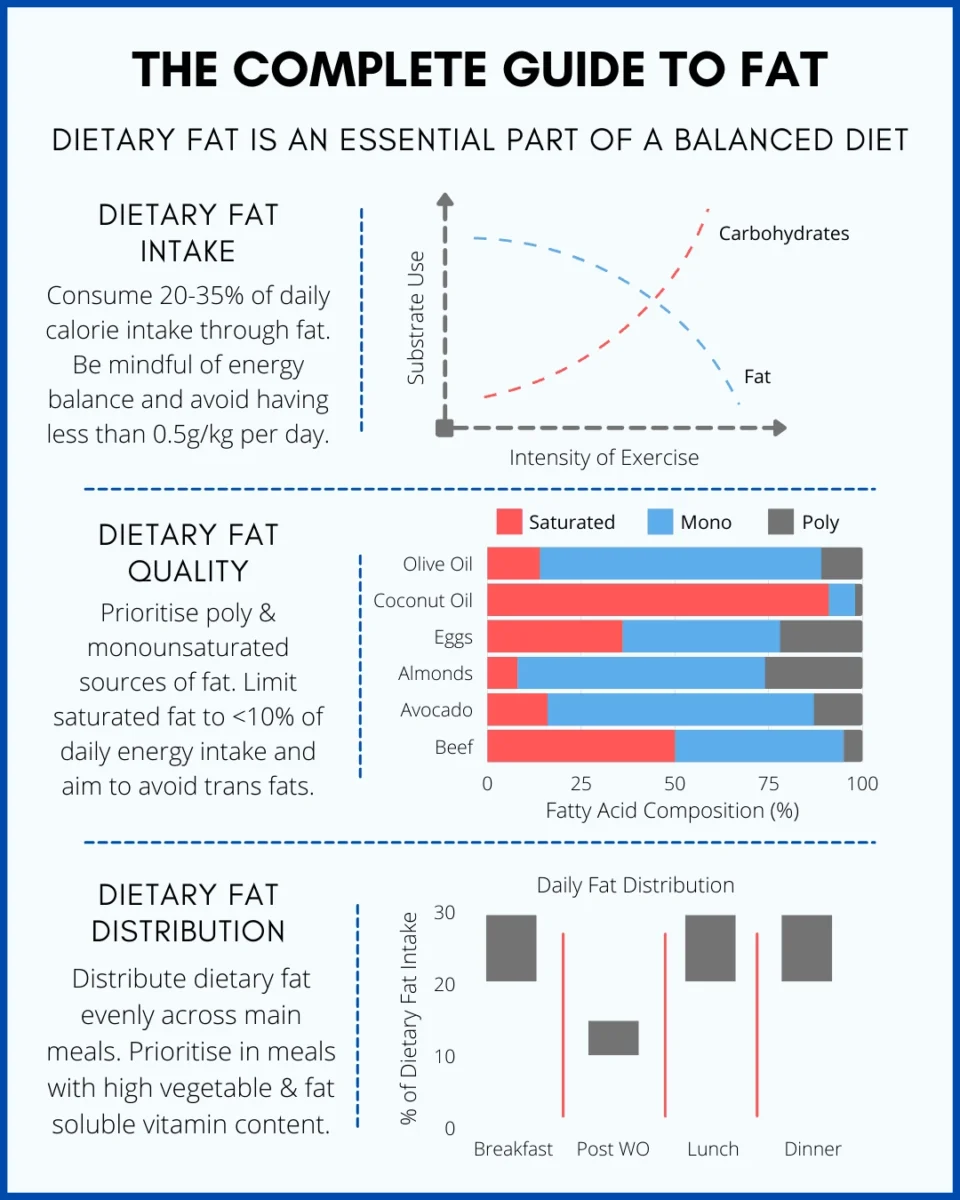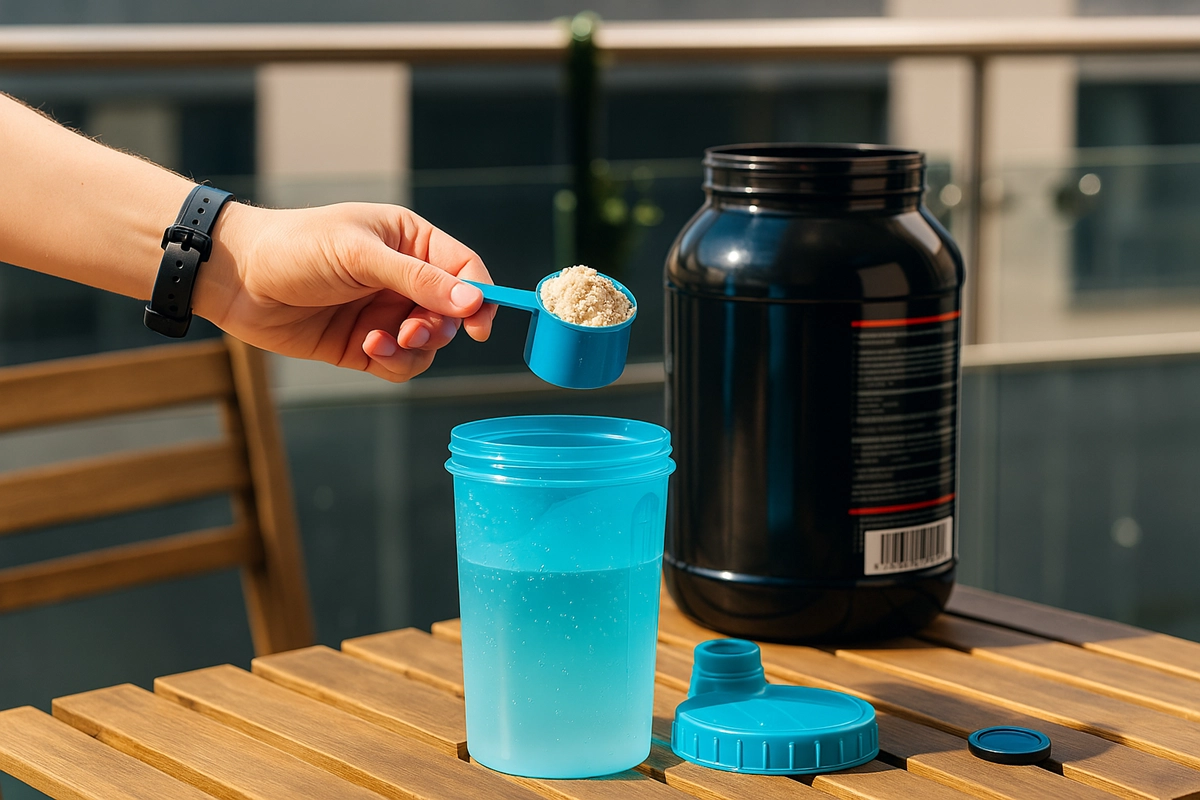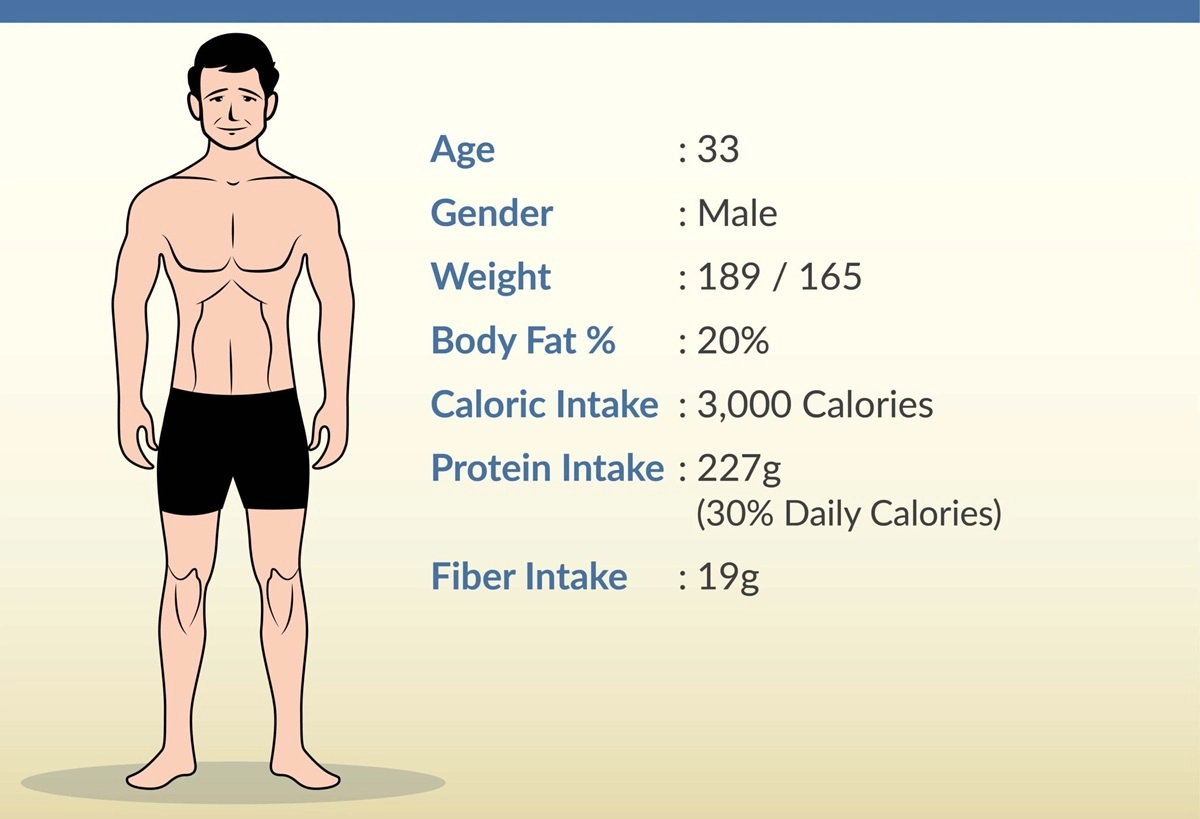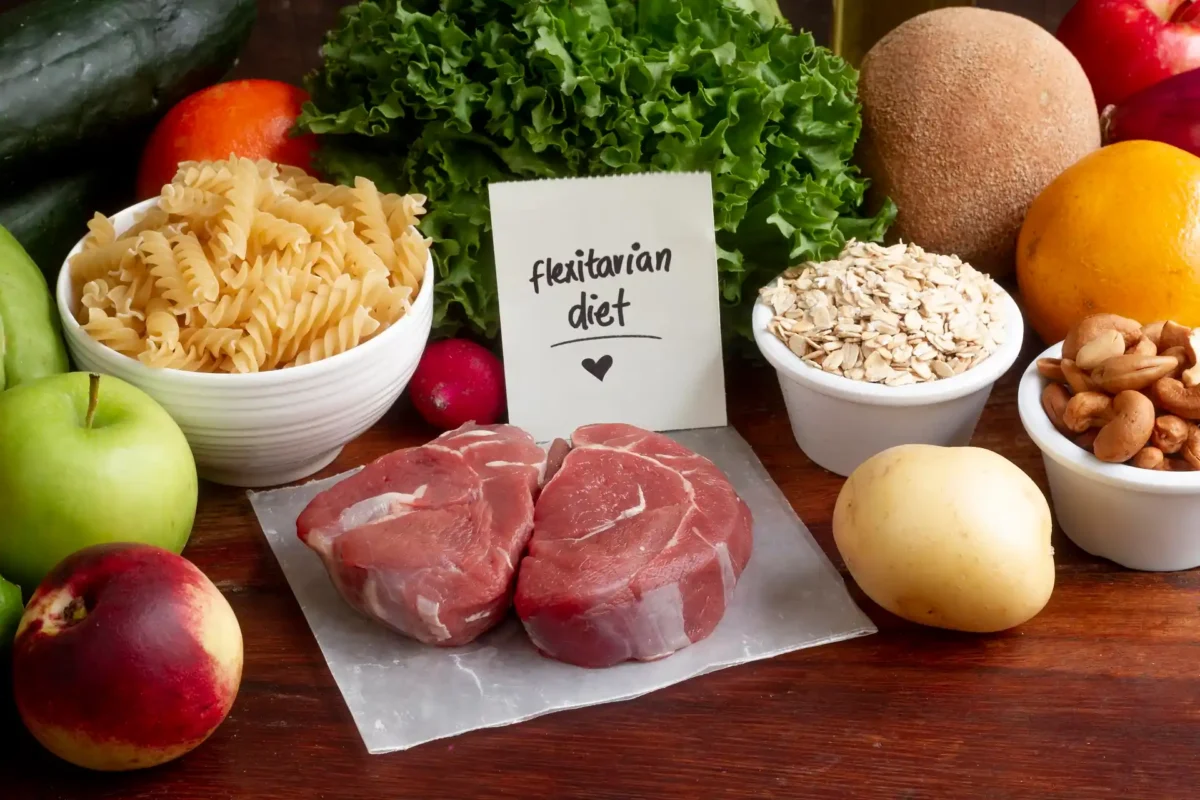You’ve probably heard conflicting advice about sodium and weight gain, especially if you’re working on building muscle while staying lean.
While sodium doesn’t directly add body fat, it can cause water retention that makes you feel bloated and shows up on the scale. Even Arnold, during his competition prep, would carefully monitor his sodium intake to achieve that razor-sharp definition.
Let’s examine the real relationship between sodium and your physique.
Sodium And Its Role In The Body
Sodium helps control blood pressure. It helps keep muscles and nerves functioning properly. It also helps regulate fluid balance in the body. Without enough sodium, you may feel weak. Excessive sodium intake can lead to various health problems.
Most people need about 2,300 mg of sodium daily. Some people need less, around 1,500 mg. This amount is for healthy adults. Athletes may need more sodium. They lose sodium through sweat. Always check food labels to manage intake.

Common Myths About Sodium
Sodium does not directly cause fat gain. It can cause water retention. Water retention makes you feel bloated. This is not the same as gaining fat. Cutting sodium may reduce bloating. It will not reduce body fat.
Bloating and fat are different. Bloating is temporary. Fat is stored energy. Bloating can come from high sodium intake. Fat comes from excess calories. Knowing this can help manage your diet better.
Sodium In A Bodybuilder’s Diet
Bodybuilders need specific nutrients to build muscles. Sodium is one of these essential nutrients. It helps regulate fluid balance in the body. Proper fluid balance is crucial for muscle function. Too much sodium can lead to water retention. This can make you feel bloated. But moderate sodium intake is necessary for electrolyte balance. It’s important to monitor your sodium levels carefully.
Sodium plays a key role in muscle contractions. It helps transmit nerve signals to muscles. Without enough sodium, muscles may cramp. This can affect your performance. Sodium also helps maintain blood volume. Proper blood volume ensures efficient oxygen delivery to muscles. Hydration is equally important. Sodium helps the body retain water, keeping you hydrated during intense workouts. Balancing sodium intake can optimize your performance.
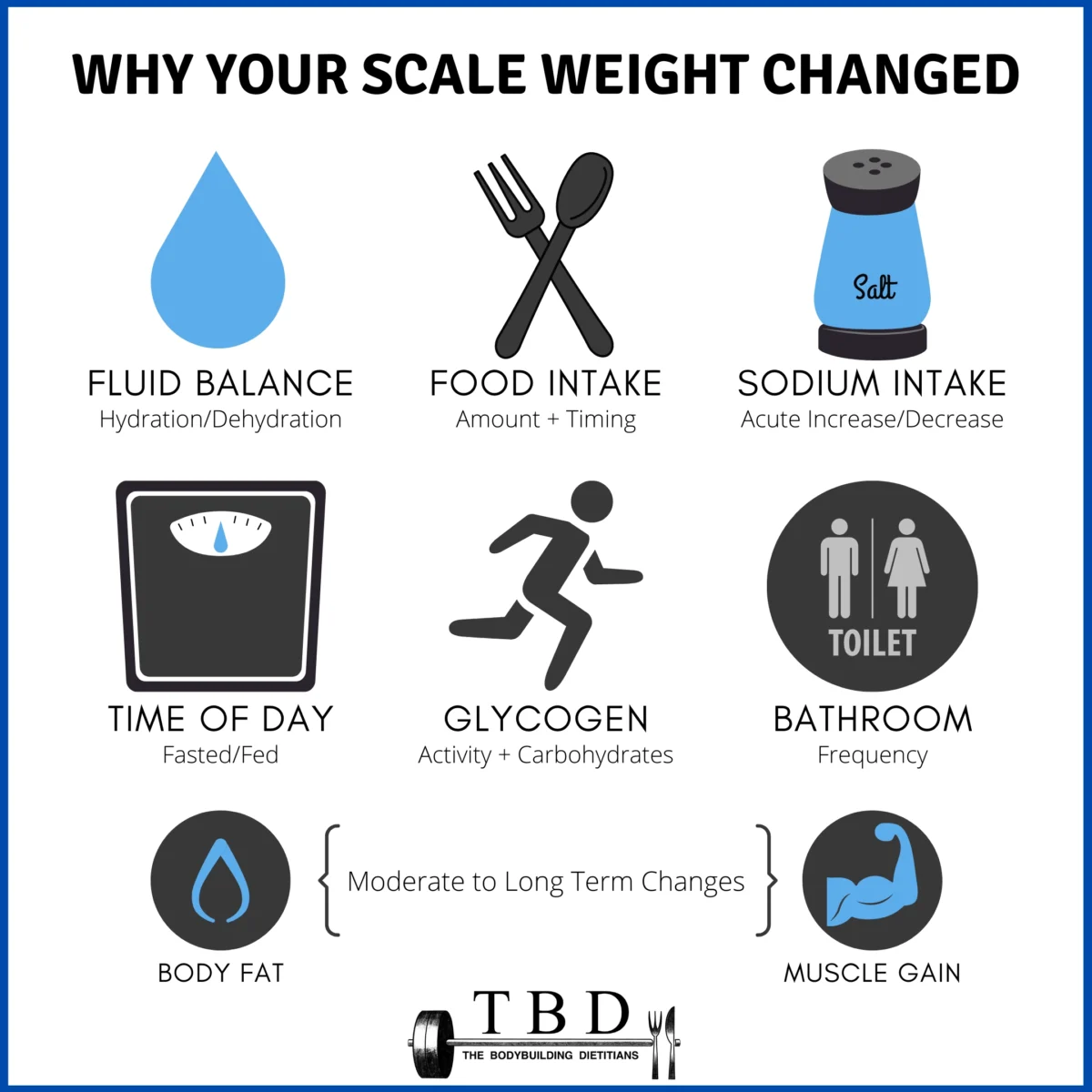
Does Sodium Cause Bloating?
Why do you feel bloated after eating salty foods?
When you consume high-sodium foods, your body’s fluid balance gets disrupted. Your body retains more water to maintain proper sodium levels, leading to that puffy, bloated feeling.
Research confirms the direct link between sodium intake and bloating. A 2019 study found that increased sodium consumption was associated with more bloating symptoms, regardless of the diet type.
Whether you’re following a high-fiber DASH diet or a standard Western diet, consuming excess sodium can lead to water retention.
Your body requires sodium for essential functions, such as nerve impulses and muscle contractions. However, too much can disrupt your body’s fluid balance.
If you’re feeling bloated, check your sodium intake – you might be consuming more high-sodium foods than you realize.
How Sodium Affects Weight
While you might’ve heard that sodium causes weight gain, the relationship isn’t that simple – it’s more about what comes with high-sodium foods than the sodium itself.
When you consume excess sodium, your body retains more water to maintain balance, resulting in temporary water weight gain.
High-sodium processed foods often pack unnecessary calories and unhealthy fats, which are the real culprits behind long-term weight gain.
1. Water Weight
Anyone who has stepped on a scale after a salty meal knows that sodium can cause the numbers to jump unexpectedly. Your body weight can fluctuate markedly due to fluid retention caused by high sodium intake. When you consume excess sodium, your body holds onto water to maintain proper balance.
This water weight isn’t permanent – it’s just your body’s natural response to daily sodium intake. You’ll notice temporary weight fluctuations, sometimes by several pounds, but don’t panic. Your body will naturally release these excess fluids once you return to standard eating patterns.
Several factors can influence how your body responds to sodium, including your menstrual cycle and certain medications. By monitoring and adjusting your sodium consumption, you can better understand and manage these temporary shifts in body weight.
2. Processed Foods
Beyond temporary water retention, sodium’s relationship with weight gain often stems from its prevalence in processed foods.
When you regularly consume foods high in sodium content, you’re typically eating items that are also high in calories and low in nutritional value.
Research supports this connection. A 2014 Spanish study found that participants with the highest sodium intake tended to have higher body weight and consumed more calories overall.
They also made less healthy food choices and ate more snacks throughout the day.
While sodium itself isn’t directly causing your weight gain, it’s the company it keeps.
Processed foods high in sodium are often calorie-dense and nutrient-poor, leading to poor health outcomes when consumed regularly.
To maintain a healthy weight, limit your intake of processed foods and focus on whole, unprocessed options.
3. Possible Causation
Despite numerous studies examining the role of sodium in weight gain, scientists haven’t found clear evidence that sodium directly causes weight gain, independent of caloric intake. Research comparing high- and low-sodium diets with equal calorie intake showed no differences in body fat changes.
However, some studies suggest that excess sodium might influence weight through indirect means. A 2015 study found links between elevated sodium intake and higher body weight, even when accounting for calorie intake.
Notably, researchers observed that children with higher sodium consumption also exercised less, which likely contributed to their weight gain.
While the relationship between sodium and weight remains complex, current evidence suggests that any connection might be more about lifestyle patterns associated with high sodium intake rather than the sodium itself.
The Recommended Daily Amount of Sodium
The recommended daily sodium intake is based on clear guidelines established by leading health organizations.
The American Heart Association recommends keeping your sodium intake under 2,300 mg per day, which is approximately one teaspoon of salt.
They’ve even set an ideal target of 1,500 mg for most adults to prevent heart disease and support body weight reduction.
You may be surprised to learn that the average sodium intake in the US is 3,400 mg per day, far exceeding the recommended amounts.
What’s more concerning is that 70% of this salt content doesn’t come from your salt shaker – it’s hidden in processed foods and restaurant meals.
That’s why tracking your sodium consumption can be tricky, even when you’re not actively adding salt to your meals.
Excess Sodium’s Effect on Health
Understanding why sodium limits matter becomes clear when examining its effects on the body. When you consume excess sodium, it causes your blood vessels to retain more water, leading to high blood pressure.
This increased pressure stresses your blood vessel walls and allows plaque to build up, considerably raising your risk of heart attack and stroke.
However, that’s not all – the health effects of excessive sodium extend beyond cardiovascular issues. You’re also at risk for severe conditions like kidney disease, kidney stones, and heart failure.
While sodium itself doesn’t directly cause weight gain or increase body fat, its impact on your overall health can affect your fitness journey. Just as Arnold always said about training smart, the same applies to nutrition – it’s about making informed choices for long-term health.
How to Reduce Sodium
You’ll find opportunities to reduce sodium every time you shop, cook, or dine out. Making small changes in these areas can dramatically cut your daily intake.
When shopping at supermarkets, focus on fresh produce and carefully review nutrition labels, as packaged foods often contain surprising amounts of sodium.
At restaurants, you can request your meals be prepared with less salt and choose menu items that aren’t heavily processed or swimming in salty sauces.
#Supermarket Shopping
Smart supermarket shopping plays a crucial role in reducing your sodium intake, as packaged foods often contain hidden sodium, even when they don’t taste particularly salty.
To make more informed choices while grocery shopping, carefully read food labels and compare the ingredients of different products. Look specifically for items labeled “no salt added” or “low sodium” when buying canned foods.
Instead of processed deli meats, opt for fresh foods or flash-frozen alternatives that naturally contain less sodium.
When scanning food labels, don’t just look at the front of the package – check the nutrition facts panel on the back. You’d be surprised how many seemingly healthy packaged foods are loaded with sodium.
#Cooking at Home
While eating out might seem convenient, preparing meals at home gives you complete control over sodium levels, much like Arnold maintained strict control over his competition-prep diet.
To reduce your sodium intake through low-sodium cooking, you’ll want to master a few key strategies. Start by replacing salt with salt-free seasonings, spices, garlic, and lemon juice for flavoring.
Your home-cooked food will taste better when you incorporate more fruits and vegetables into your meals. Choose plain ingredients instead of pre-seasoned options – think basic couscous rather than flavored versions.
Skip the packaged mixes and store-bought sauces that often hide excessive sodium. Instead, create your salad dressings and marinades.
Remember Arnold’s dedication to meal prep – it’s about taking control of what goes into your body to achieve the best results.
#Eating at Restaurants
Even with solid home cooking habits in place, dining out remains a social reality for most people. Restaurant food typically contains higher sodium levels than home-cooked meals, which can contribute to excessive sodium intake and potential weight gain if not carefully monitored.
To keep your salt diets in check while eating out, follow these dining out tips:
- Request nutritional information before ordering your meal
- Ask your server or chef to reduce the salt in your dish
- Leave the table’s salt shaker untouched
- Share your meal with a dining companion
- Make restaurant visits occasional treats rather than regular habits
These strategies help you maintain control of your sodium intake while still enjoying social meals.
#Making Small Changes
Transforming your eating habits doesn’t require drastic changes overnight – the key is to start with minor, manageable adjustments to your sodium intake.
Focus on gradually modifying your dietary patterns by making one change at a time, allowing your body and taste buds to adapt.
Start by tracking your current dietary sodium intake for a week to identify where you can make improvements.
Then, implement small changes, such as preparing more home-cooked meals instead of processed options.
If you slip up occasionally, don’t get discouraged – it’s a regular part of developing new habits.
Remember that sustainable changes to your body weight and overall health come from consistent, modest adjustments to your daily dietary allowance.
If you’re struggling to maintain these modifications, consider consulting a dietitian for personalized guidance and support.
Which Foods Are High in Sodium?
Many everyday foods contain surprisingly high amounts of sodium, even when they don’t taste particularly salty. Your daily intake of sodium can quickly exceed recommended levels through common processed foods and restaurant meals, which account for over 70% of the average American’s sodium intake.
Here’s where hidden sodium lurks:
- Breads and baked goods
- Deli meats and cured products
- Canned soups and vegetables
- Pizza and frozen meals
- Restaurant food and takeout
- Condiments and sauces
- Snack foods
While table salt is an obvious source, it’s the sodium levels in packaged and prepared foods that often contribute most to excessive consumption.
Understanding these hidden sources is essential, as high sodium intake can impact your diet and body weight management goals.
Foods That Are High in Sodium
You’ll need to watch out for common high-sodium foods, such as bread products, canned goods, and cold cuts, which can sabotage your healthy diet.
Many breakfast cereals also pack significant amounts of hidden sodium, even though they mightn’t taste particularly salty.
Sauces, dressings, and condiments are often loaded with sodium as well – a single tablespoon of soy sauce can contain more than half of your daily recommended intake.
1. Bread and Bread Products
While packaged bread might seem like an innocent staple in your diet, it’s one of the most significant sources of hidden sodium in the American diet. Research shows that U.S. bread products contain 12% more sodium than their U.K. counterparts, with only 20% meeting national salt reduction guidelines.
You’ll want to be especially careful with certain bread products that pack significant amounts of hidden salt. Crumpets, bagels, ciabatta bread, and tortillas are among the worst offenders in terms of sodium content.
High sodium intake from these everyday bread products can contribute to increased blood pressure and potential weight gain through water retention. If you’re watching your sodium intake or concerned about cardiovascular health risks, consider limiting or choosing low-sodium alternatives for these products.
2. Canned Foods
The convenience of canned foods comes at a significant cost in sodium to your daily diet. When you’re watching your sodium intake, you’ll need to be especially careful with canned foods, as they’re often loaded with salt content that can affect your body weight.
Consider that a single can of minestrone packs a whopping 1,550mg of sodium – that’s more than half your daily recommended intake.
You can still include canned foods in your meal plans, but you’ll want to manage your sodium levels carefully. Try rinsing canned vegetables and seafood before eating to reduce their salt content.
For example, a cup of canned tuna contains 337 mg of sodium, but rinsing can help reduce this amount. Remember, high-sodium diets can lead to water retention and temporarily increase your weight on the scale.
3. Cold Cuts and Deli Meats
Despite their convenience for quick lunches, cold cuts and deli meats pack a serious sodium punch that can derail your weight management efforts.
Your sodium intake can skyrocket when you’re regularly consuming these processed meats, as just one slice of ham contains nearly 300mg of sodium.
Consider this: a typical serving of pastrami delivers 560mg of sodium, while even seemingly healthy options, such as lean chicken strips, can contain up to 650mg per serving.
These high levels of dietary salt intake aren’t just factors for obesity – they’re also linked to increased blood pressure and chronic kidney disease risks.
If you’re watching your weight, you’ll want to limit your consumption of luncheon meats or choose low-sodium alternatives.
Better options include fresh-cooked meats or plant-based proteins that you’ve prepared yourself.
4. Breakfast Cereals
Many breakfast cereals marketed as healthy choices can secretly undermine your weight loss goals with their surprising sodium content. You’ll need to be mindful of your portion sizes, as hidden sources of sodium can quickly add up when you’re pouring that morning bowl.
Consider this: a single cup of cornflakes packs 204 mg of sodium, while instant oatmeal contains a whopping 365 mg per serving. When you’re trying to manage your weight, these numbers matter – excessive sodium intake can contribute to water retention and potential weight gain.
Even Arnold, known for his disciplined approach to nutrition, advocates for carefully reading labels.
To minimize sodium while enjoying your morning cereals:
- Measure portions precisely
- Choose plain, unflavored varieties
- Look for low-sodium alternatives
- Consider steel-cut oats instead of instant options
5. Sauces, Dressings, and Condiments
Hidden sodium lurks in your favorite sauces, dressings, and condiments, silently sabotaging your fitness goals. You might think you’re making healthy choices, but these seemingly innocent additions can significantly increase your sodium intake and contribute to weight gain.
Consider this: just one tablespoon of soy sauce packs a whopping 879 mg of sodium – that’s more than a third of your daily recommended limit.
Even ketchup, which you might use liberally, contains 154 mg per tablespoon. Oyster sauce isn’t much better, with 437 mg per tablespoon.
These high levels of sodium in sauces and dressings can increase your risk of obesity by causing water retention and encouraging overconsumption.
To protect your fitness goals, carefully monitor your overall sodium intake and consider using herbs and spices as alternatives.
6. Pork Products
When scanning your grocery store’s meat section for protein-rich options, you’ll discover that processed pork products pack a serious sodium punch.
You might be surprised to learn that just two slices of bacon contain a whopping 330mg of sodium, while two standard pork sausages aren’t far behind at 326mg.
High salt intake from processed pork products can contribute to various health issues, including obesity and cardiac diseases. While protein is essential for muscle building, excessive sodium intake from salty foods might lead to water retention and kidney stones.
If you’re watching your weight or concerned about health, consider:
- Choosing fresh, unprocessed pork cuts
- Limiting bacon and sausage consumption
- Reading nutrition labels carefully
- Opting for low-sodium alternatives when available
7. Cheese and Dairy Products
Moving from processed meats to dairy products, you’ll find another notable source of hidden sodium in your everyday foods: cheese.
While individual studies haven’t directly linked cheese consumption to body fat mass, the high salt content in many varieties can contribute to excess weight through water retention.
You’ll want to watch your daily sodium intake, especially with certain dairy products that pack a significant salt punch. Imported blue cheeses and halloumi are among the highest in sodium, while branded cheddar often contains more salt than store brands.
Be particularly cautious with cheese spreads and sauces, which can contain up to 651mg of sodium per 100g serving.
Even seemingly healthy options like cottage cheese contribute considerably to your daily sodium intake, with 224mg per 100g serving.
Consider lower-sodium alternatives when building your nutrition plan.
How to Reduce Sodium in the Diet
Managing your daily sodium intake starts with making wise choices about the foods you eat and how they’re prepared.
You’ll want to focus on preparing fresh meals at home rather than relying on processed foods and takeout, which can contribute extra salt to your diet.
To reduce sodium effectively, opt for fresh or frozen vegetables instead of canned ones, and prepare your meat and fish rather than purchasing pre-made versions.
You can enhance flavor without adding extra salt by using herbs and spices. Making your sauces and choosing low-sodium foods at the grocery store will also help reduce sodium intake.
Consider following the DASH diet, which emphasizes low-sodium foods and has been proven to lower blood pressure when sodium intake is kept under 1,500 mg daily.
Why Is Reducing Sodium Good for the Body?
You’ll notice significant improvements in your heart health by reducing your sodium intake, as excessive salt can elevate blood pressure and strain your cardiovascular system.
Reducing sodium also helps lower your risk of developing gastric cancer, with studies showing a clear link between high salt intake and stomach problems.
Additionally, you’ll find it easier to maintain a healthy weight since less sodium means less water retention and bloating, which can contribute to obesity-related health issues.
#Improved Heart Health
The connection between sodium intake and heart health is both direct and profound. When you reduce sodium in your diet, you’ll experience improved heart health, characterized by significantly lower blood pressure levels. This reduction directly decreases your risk of serious cardiovascular issues.
Research indicates that even modest reductions in sodium intake can yield substantial health benefits. You’ll lower your chances of experiencing heart failure, stroke, and heart attacks – all while maintaining better blood pressure control.
While the relationship between sodium and weight gain isn’t always straightforward, excessive sodium intake can indirectly increase your risk of obesity through its impact on heart health and fluid retention.
Think of your heart as a high-performance engine – it works best when you’re not overloading it with sodium, allowing for ideal blood flow and reduced strain on your cardiovascular system.
#Reduced Risk of Gastric Cancer
While numerous health benefits stem from reducing sodium intake, its impact on gastric cancer risk is particularly significant. Research has shown a direct link between high salt intake and increased health risks associated with gastric cancer.
You’ll want to pay attention to this connection, as studies reveal that for every 5 grams of daily sodium you consume, your risk of developing gastric cancer increases by 12%.
When considering dietary approaches to maintaining a healthy body weight and reducing the risk of obesity, monitoring your sodium intake becomes paramount.
While the relationship between salt and gastric cancer requires more research, the evidence suggests that reducing your salt consumption may help protect against this serious condition.
Consider sodium reduction as another tool in your arsenal against potential health complications, much like maintaining proper exercise and nutrition habits.
#Reduced Risk of Obesity and Related Conditions
Several essential health benefits emerge when sodium intake is reduced, including a decreased risk of obesity and weight-related complications.
Research indicates that high sodium intake is directly correlated with increased fat accumulation in both adults and children. You’ll want to monitor your 24-hour urinary sodium levels, as they’re a reliable indicator of your daily intake.
When you reduce your sodium consumption, you’re not just helping your body weight – you’re also lowering your risk of developing severe health conditions like Type 2 diabetes.
The effects of sodium on your body go beyond water retention; they influence how your body stores fat. Just as Arnold always emphasized the importance of proper nutrition, maintaining appropriate sodium levels is essential for achieving ideal body composition and preventing obesity-related complications.
Scientific Studies And Findings
Scientific studies suggest sodium doesn’t directly cause weight gain in bodybuilding. Excessive sodium can lead to water retention, mimicking fat gain. Managing sodium intake may help maintain a leaner physique.
1. Research Overview
Studies show that sodium does not directly cause fat gain. Sodium can cause water retention. This makes the body look and feel bloated. Some researchers found that high sodium intake can lead to increased blood pressure. But it does not directly contribute to fat storage.
2. Expert Opinions
Many experts agree that sodium itself does not cause fat gain. They believe that a balanced diet is key. Too much sodium can lead to health problems. But it does not make people fat. Bodybuilders often monitor their sodium intake. They do this to manage water retention. They focus on overall diet and exercise for muscle gain and fat loss.
What Conditions Can a High Salt Diet Cause?
Because excessive sodium attracts water into the bloodstream, a high-sodium diet leads directly to increased blood volume and pressure in the circulatory system. This elevated pressure, known as hypertension, can trigger a cascade of serious health problems if left unchecked.
Your high-sodium diet doesn’t just affect your blood pressure – it’s linked to an increased risk of obesity and weight gain. The damage from excessive sodium intake can extend to multiple organs, potentially causing heart disease, kidney disease, stroke, and even blindness.
Recent studies have also connected high sodium consumption to type 2 diabetes and gastric cancer.
You’ll want to be particularly careful about salt if you’re already managing conditions like obesity or hypertension, as excess sodium can worsen these conditions and complicate your health journey.
Practical Tips For Bodybuilders
Bodybuilders need to plan their meals carefully. Balanced meals are key to success. Include protein, carbs, and fats. Avoid processed foods with high sodium. Fresh fruits and vegetables are better choices. Drink plenty of water daily. This helps to flush out excess sodium.
Track your sodium intake daily. Use a food diary or app for this. Aim for less than 2,300 milligrams of sodium per day. Read food labels for sodium content. Choose low-sodium options whenever possible. Be aware of hidden sodium in sauces and dressings. Cooking at home helps you control sodium levels better.
To Wrap It All Up
While sodium won’t directly pack on pounds like a heavy dumbbell, you’ll want to keep your intake in check. Excessive sodium can lead to water retention and bloating, making you feel heavier than you are.
By choosing whole foods, reading labels, and staying within recommended sodium limits, you’re setting yourself up for better weight management and overall health success.
FAQs
What Does Sodium Do to Your Body?
Sodium regulates fluid balance, supports nerve function, and helps muscles contract. It maintains blood pressure by controlling water retention. Excess sodium can lead to high blood pressure, heart disease, and kidney damage. The recommended intake for adults is less than 2,300 mg per day.
How Much Sodium Is Too Much per Day?
Consuming more than 2,300 milligrams of sodium per day is considered too much for adults. Exceeding this limit increases the risk of high blood pressure, heart disease, and stroke. The ideal intake for most adults is closer to 1,500 milligrams, especially for those with hypertension or cardiovascular risk.
Does Sodium Cause Water Retention?
Yes, sodium causes water retention by pulling water into the bloodstream and surrounding tissues. This increases fluid volume, which can lead to swelling and higher blood pressure. Reducing sodium intake helps lower fluid retention, especially in individuals with kidney issues or hypertension.
Can Sodium Cause Bloating?
Yes, sodium can cause bloating by increasing water retention in the body. Excess sodium draws fluid into the stomach and intestines, leading to a swollen or puffy feeling. Reducing sodium intake may help prevent bloating, especially in people sensitive to salt.
How Does Sodium Affect Metabolism?
Sodium affects metabolism by regulating fluid balance, nerve signaling, and muscle contractions, all essential for metabolic processes. It influences cellular energy use and nutrient transport. Imbalances in sodium levels can disrupt metabolic efficiency and contribute to fatigue, poor circulation, or weight fluctuations.
How Much Sodium Do Fitness Influencers Recommend?
Fitness influencers often recommend 2,000 to 5,000 milligrams of sodium per day, depending on activity level and sweat loss. High-intensity athletes may require more to maintain electrolyte balance. These recommendations usually exceed general dietary guidelines but support hydration and muscle function during intense training.
Are There Healthy Sources of Sodium?
Yes, healthy sources of sodium include sea salt, Himalayan pink salt, and sodium found naturally in vegetables, dairy, and seafood. These sources provide additional minerals like potassium, calcium, and magnesium. Choosing unprocessed foods helps maintain balanced sodium intake without excess additives.

